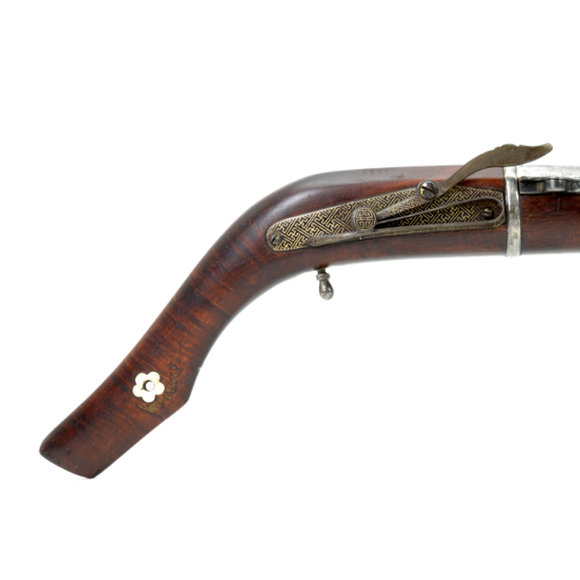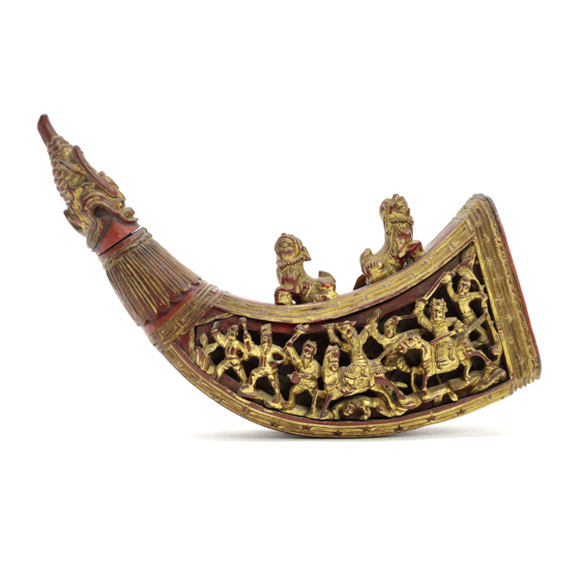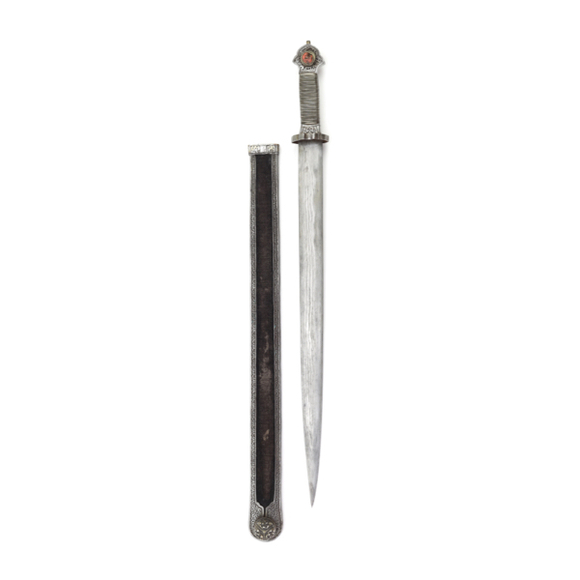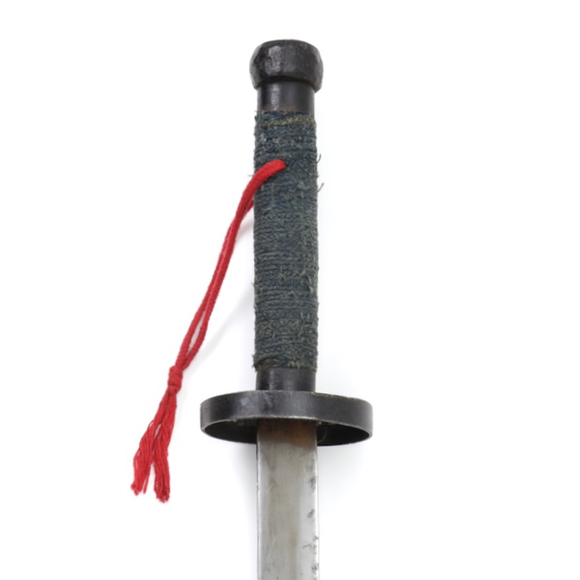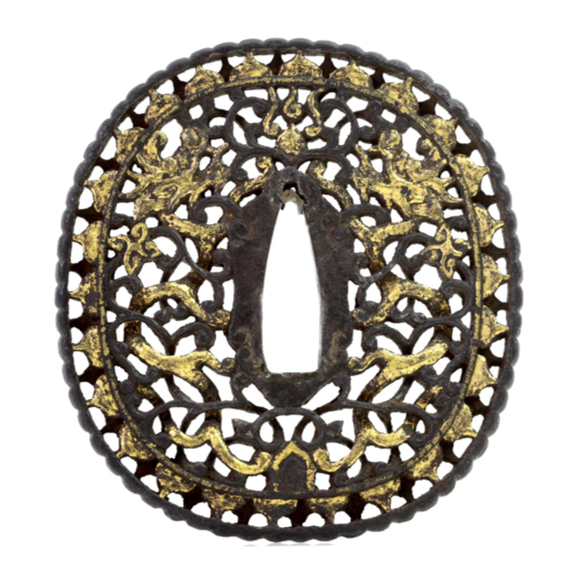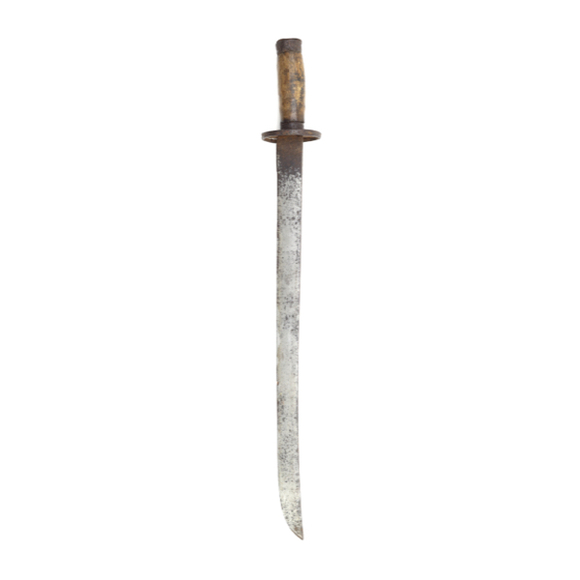With a golden damascened lock of the Indo-Portuguese type.

14.6 cm
Width 32 mm
Length 44.5 mm
Neck 10.5 mm
Base of head 3 mm
21 grams
Iron, silver
Qing Empire, probably Eastern Tibet
19th century
Introduction
Arrows played important roles in the ceremonies of various cultures under the Qing, including the Tibetans, Mongolians, and the Manchu rulers. Special arrows with highly decorative heads were sometimes worn during auspicious ceremonies or votive offerings.
This example
An iron ceremonial arrowhead. Its basic profile reminds of the shape of a gourd, which in itself was an auspicious symbol in Chinese culture and its sphere of influence.
It has a short "neck" from which the tang protrudes. The tang is forge folded, and is square in cross-section with diagonal file marks.
Both faces are decorated with scrollwork in silver damascening. The nature of the decoration is of a type that makes it hard to decide whether it is Manchu, Mongolian or Tibetan. Craftsmen from all these spheres did such scrollwork, and silver overlay in this style was also common across the entire region. However, my gut feeling says most likely Eastern Tibetan on the basis of the style.








Probably of Southern origin, with a straight blade and flaring tip.
In the style of northern work of the 16th and 17th centuries

